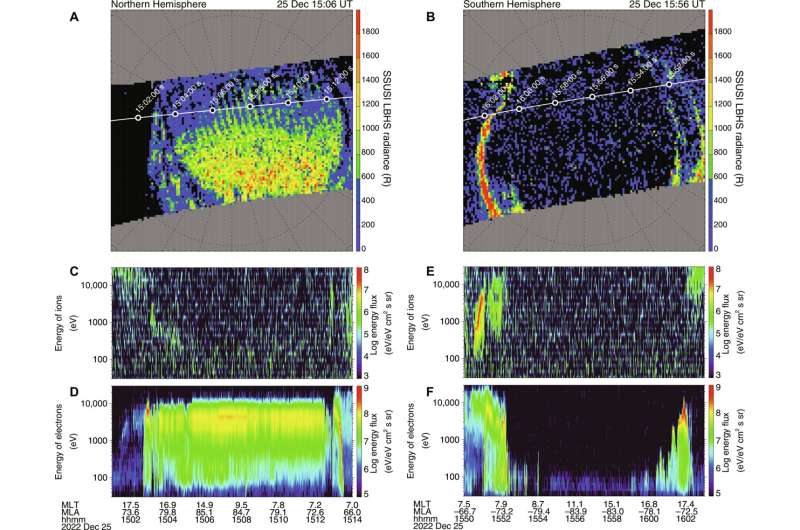June 24, 2024 report
This article has been reviewed according to Science X's editorial process and policies. Editors have highlighted the following attributes while ensuring the content's credibility:
fact-checked
peer-reviewed publication
trusted source
proofread
Mystery of massive aurora in Arctic skies in December 2022 solved by astronomers

A small team of astronomers affiliated with several institutions in Japan, working with a pair of colleagues in the U.S., has solved the mystery of the unusually smooth aurora that appeared in the Arctic sky in December of 2022.
In their paper published in Science Advances, the group describes how they pored over both ground-based data and satellite observations recorded during the event and what they learned by doing so.
In December of 2020, a ground-based camera in Norway recorded what was described at the time as a remarkable auroral event in the night sky—one that spanned 4,000 kilometers across the polar cap. It was deemed as unusually smooth and covered much more of the night sky than is normal.
For two years its source remained a mystery. In this new study, the research team has finally determined the conditions that led to the unusual event.
The team studied camera images of the event and then compared them with satellite imagery from 75 magnetic latitudes. In so doing, they found a supra-thermal electron stream that came from the sun's corona, in emission patterns that looked remarkably like images that have been captured of polar rain aurorae—where electrons traveling from the sun's corona travel through the Earth's atmosphere above one of the polar regions.
Convinced that they were on to something, they did some more research—this time looking into why the aurora was able to last so long. They found that the unique event had occurred during an unusually calm period of solar wind.
As the polar rain aurorae filled up the night sky that December, the solar wind density dropped to as low as 0.5 cm-3—something that almost never happens. The research team notes that polar rain aurorae are typically invisible to the naked eye. The reason the one that occurred in 2022 could be seen by a regular camera was due to the lack of solar wind.
The study of auroras, it has been noted, has been greatly assisted by citizen scientists—they were, for example, instrumental in solving the source of purple lights that appeared over the Canadian sky in 2016.
More information: Keisuke Hosokawa et al, Exceptionally gigantic aurora in the polar cap on a day when the solar wind almost disappeared, Science Advances (2024). DOI: 10.1126/sciadv.adn5276
Journal information: Science Advances
© 2024 Science X Network



















